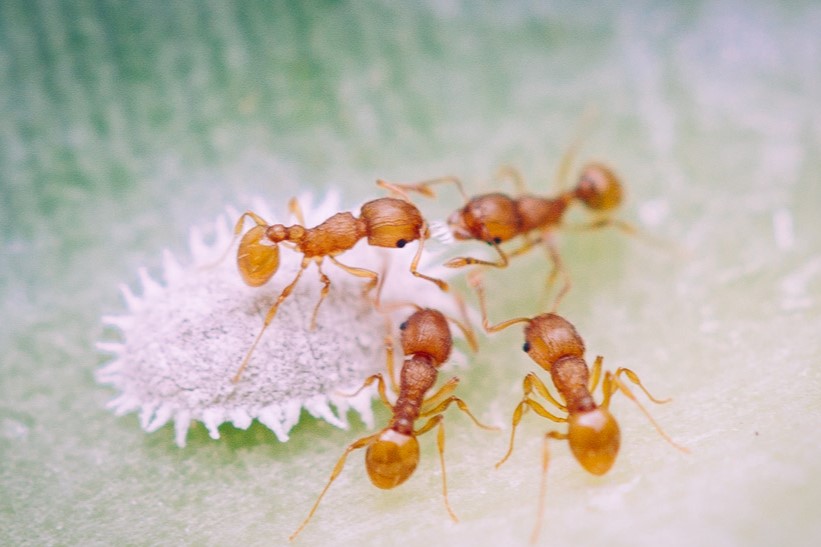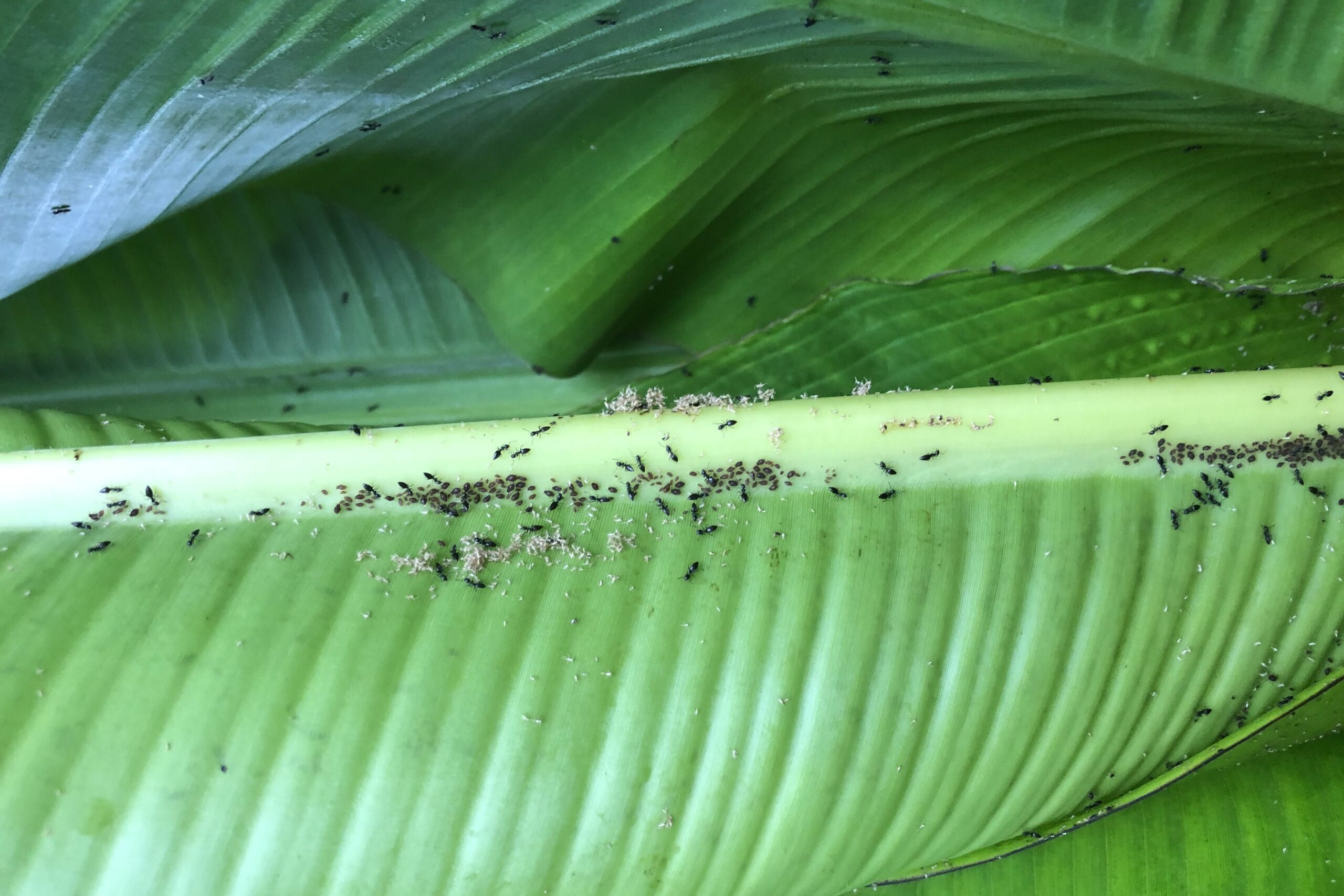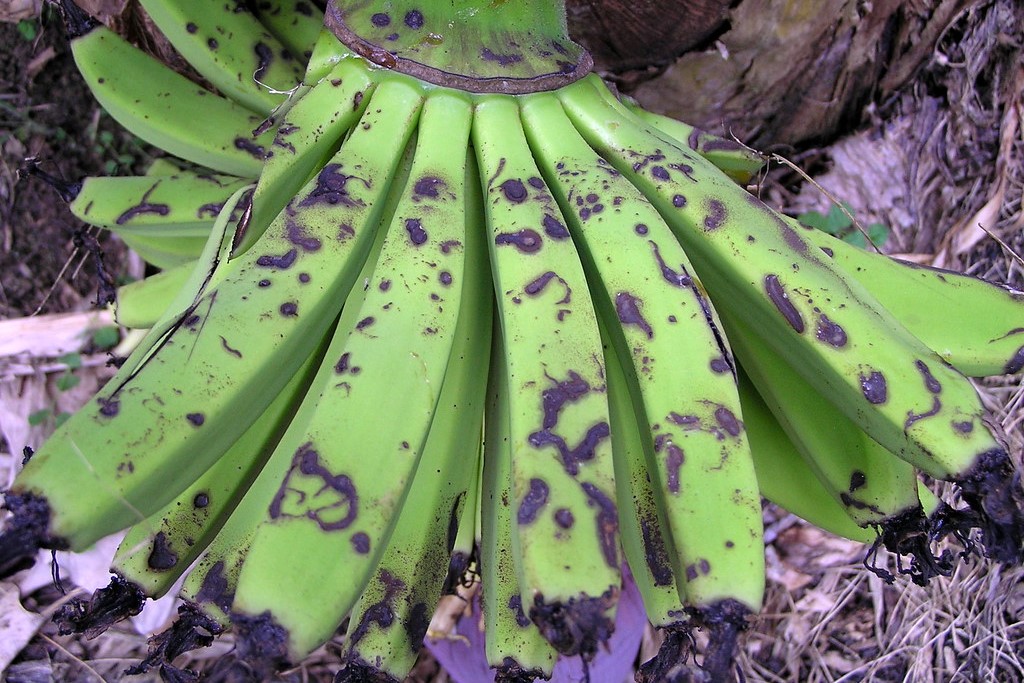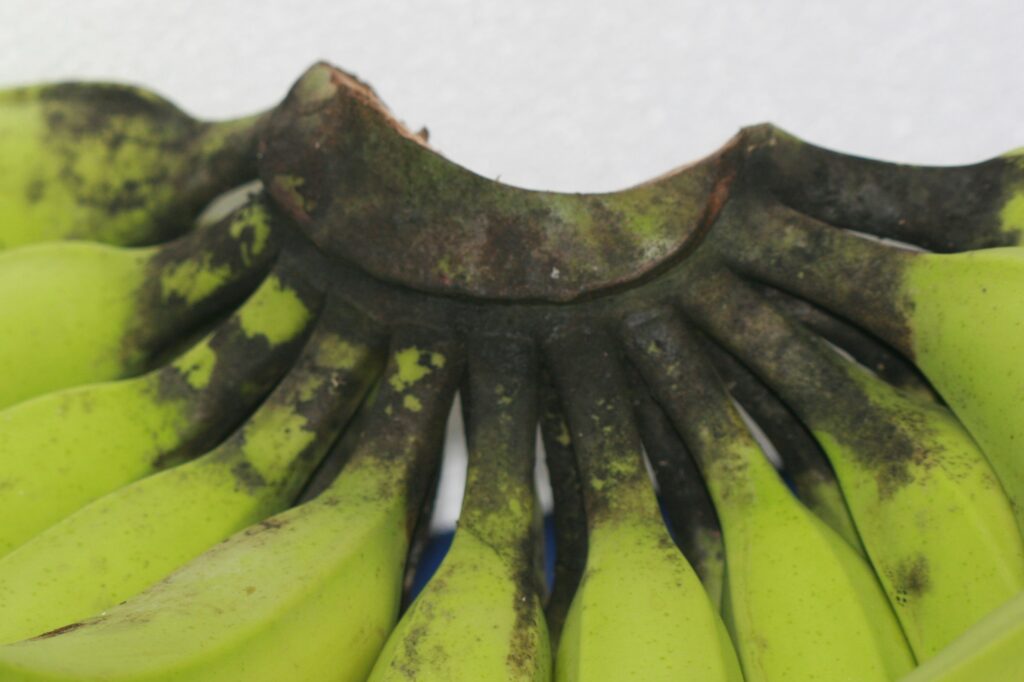A growers' guide to ant related problems and their management
By Daniel Farrell, Richard Piper, David East and Kathy Grice
Ants are commonly found in commercial and backyard plantings of bananas across Australia. Ants find suitable sites to nest including in the ground, behind old leaf sheaths, inside decaying pseudostems or on weeds and leaf trash surrounding the plants. Depending on the species, ants play a different role on the farm and have a different effect on production.
Ants – Good and bad
Different species of ants can co-exist in bananas, however, depending on management practices and the surrounding environment, only one or two species typically dominate at any given time. Ants can be broadly split into two groups, based on their food preferences, either sugar feeders or protein feeders.
Protein feeders including green tree ants, Argentine ants, and coastal brown ants can be useful biological control agents as they prey on pest insects including banana scab moth, cluster caterpillar, banana weevil borer and thrips.
Sugar feeders on the other hand, can be detrimental as they aid the build-up of sap sucking insects such as aphids, scale insects and mealybugs, which they protect (‘farm’) in return for their sugary secretions. Many species are involved, and they are commonly referred to as sugar or tramp ants.


Invasive ant species (Electric ants, fire ants and yellow crazy ants) are also be present in Queensland. Contact Biosecurity Queensland on 13 25 23 if you suspect you have exotic ants on your farm.
Ant problems
Ants generally aren’t considered a major pest for bananas, however, damage to fruit associated with abdominal spray secretions, secondary infections and pests, or nest construction in the bunch can be an issue.
Several species of ants spray formic acid from their abdomens when disturbed, which can damage the fruit. This damage appears as dark brown to black sunken trails or marks on the fruit skin.


Ants protecting sap sucking insects in the bunches can lead to black fungal growth known as sooty mould developing on the fruit. Sooty mould is caused by a fungus growing on the honey dew produced by sap sucking insects, for example scale insects, mealybugs and aphids. This mould is superficial, but difficult to remove from fruit. If banana aphids are present, they may also transmit the virus that causes bunchy top disease.
During wet weather ants can build nests by carrying soil and debris up into the bunch. This contamination can result in marking of the fruit when it is harvested and transported to the shed.
Ants also pose an occupational health and safety hazard to workers, with risks of biting, stinging or injury from formic acid sprays. Ants can also cause indirect problems such as damaging and blocking irrigation lines.
Ant management
Ants can be difficult to manage, however, they are generally suppressed with insecticide treatments used against other pests. Ground spray applications for banana weevil borer or banana rust thrips control will reduce populations and bunch protection applications will protect the fruit.
For more information contact:
The Better Bananas team
Department of Agriculture and Fisheries
South Johnstone
13 25 23 or email betterbananas@daf.qld.gov.au
This information has been updated as part of the Banana Integrated Pest and Disease Management Program (BA21004) which is funded by Hort Innovation, using the banana industry research and development levies and contributions from the Australian Government. Hort Innovation is the grower-owned, not-for-profit research and development corporation for Australian horticulture. The Queensland Government has also co-funded the project through the Department of Agriculture and Fisheries.


